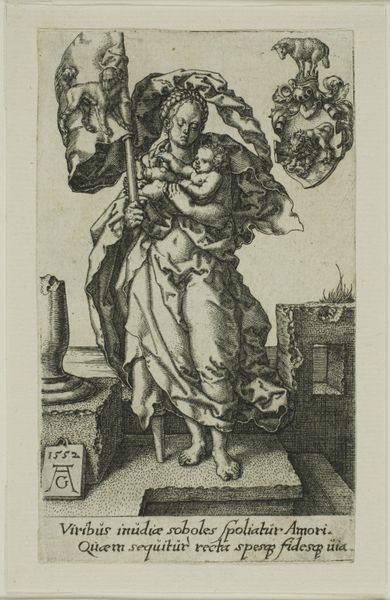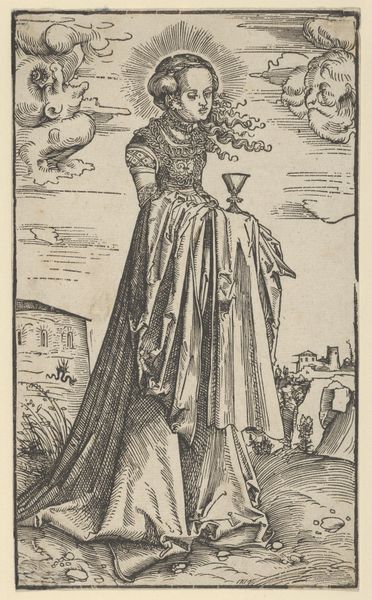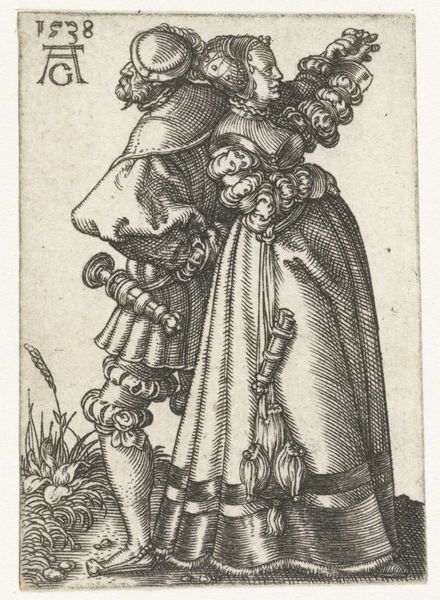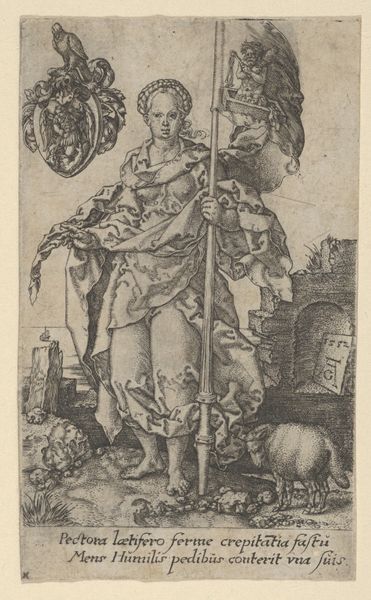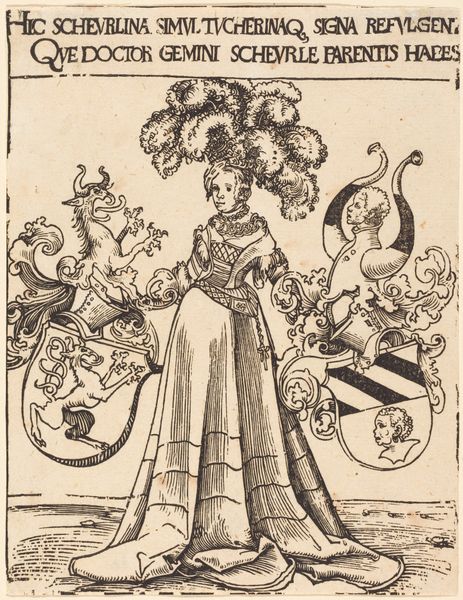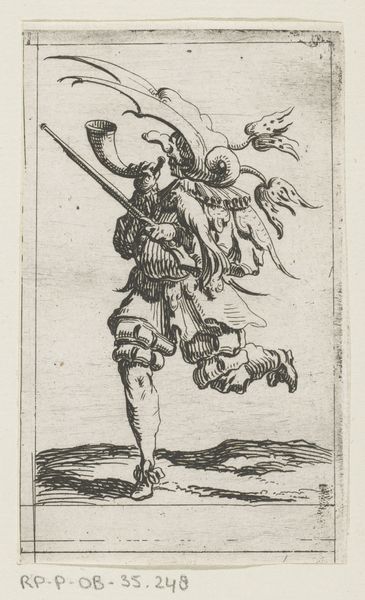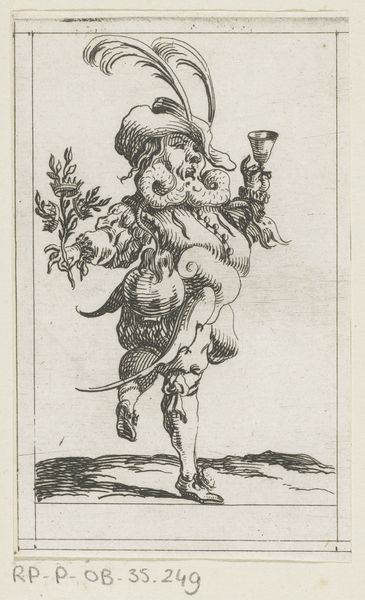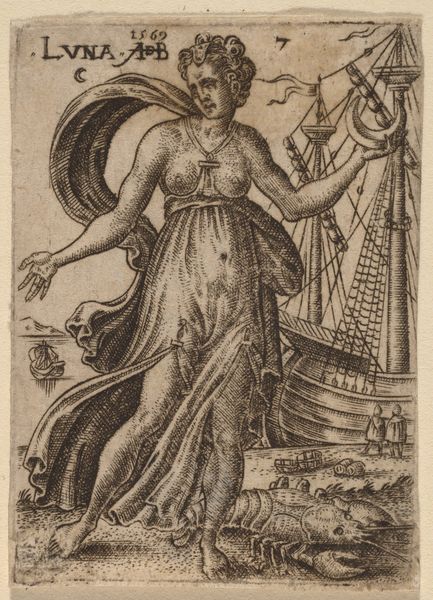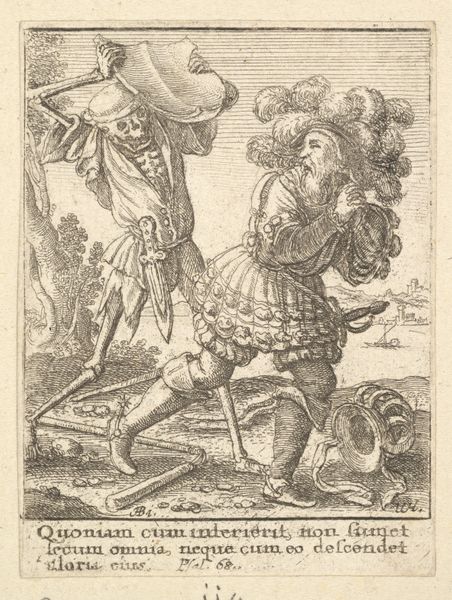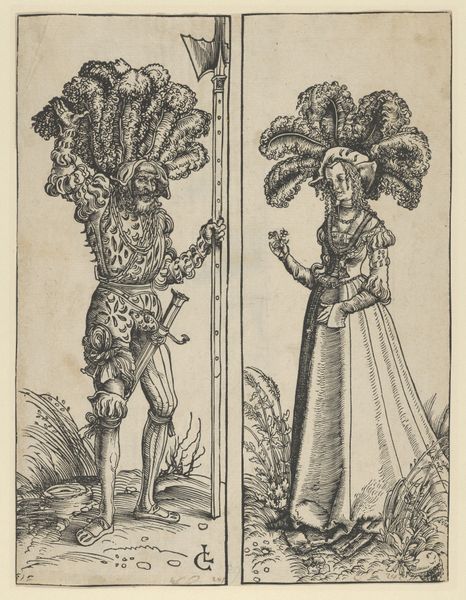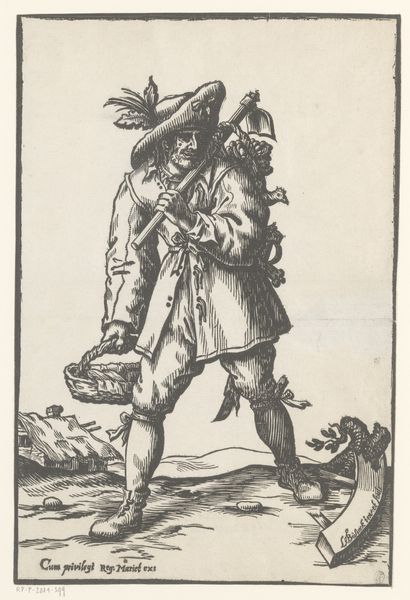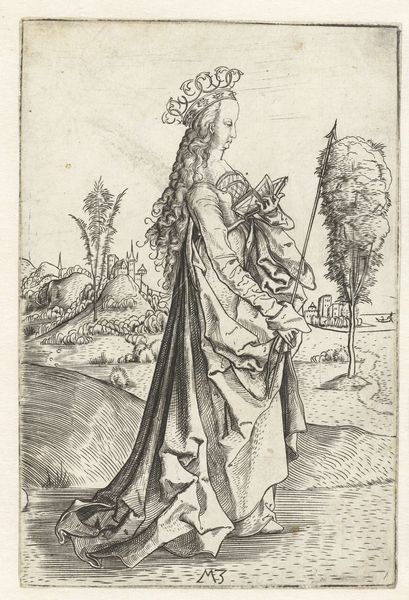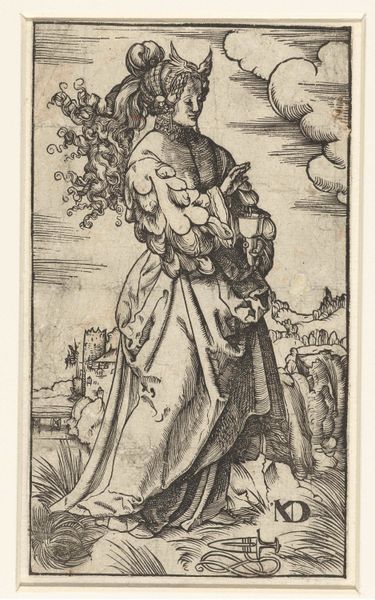
engraving
#
portrait
#
dutch-golden-age
#
landscape
#
figuration
#
genre-painting
#
engraving
Dimensions: height 322 mm, width 215 mm
Copyright: Rijks Museum: Open Domain
Curator: Alright, let’s dive into this engraving, “Vrouw met fruitmand” from 1629, created by Ludwig Büsink. Immediately striking, isn’t it? Editor: Yes! I find it curious. There's an undeniable stillness about the scene, yet she's clearly in motion. Like she's walking through a dream. The detail in her dress contrasting the emptiness of the landscape. It's lovely, melancholy maybe? Curator: Indeed. From a materialist perspective, engravings like these were integral to disseminating imagery in the Dutch Golden Age. This woman carrying her abundance. The piece speaks to the burgeoning markets, consumerism and an increasing obsession with depicting the trappings of everyday life through material production. Editor: I’m drawn to that basket on her head. Imagine the weight, both literally and symbolically. Is it a burden, or is she proud? I imagine she’s singing to herself, about her man, imagining them enjoying the spoils from this labor! The meticulous line work. It adds so much to that imagined interiority. Curator: Absolutely. And the medium itself is important. Engravings, as opposed to painting, were far more accessible to a wider populace. That speaks volumes about the artist's intention and the social role this imagery played. Were the work more crude one might see the message to celebrate hard labour, to carry on despite hardships. The care put in the production complicates such a direct message and elevates the work from a celebration of pure toil. Editor: I agree, her calm suggests acceptance more than burden, perhaps even hope. To me, she transcends the material reality and almost feels iconic. I see her as a spirit of bounty, like Demeter, but filtered through 17th century daily existence. Curator: Well put. It’s in those nuances of everyday work where we locate larger changes in the labor economies of the period. A fascinating piece for illustrating just how loaded simple imagery can be when thinking through the conditions of its making. Editor: Yes, and letting the feelings speak as much as the facts! Now when can we harvest our own abundance of insights from art like this? Thanks, a fruitful discussion I'd say.
Comments
No comments
Be the first to comment and join the conversation on the ultimate creative platform.
